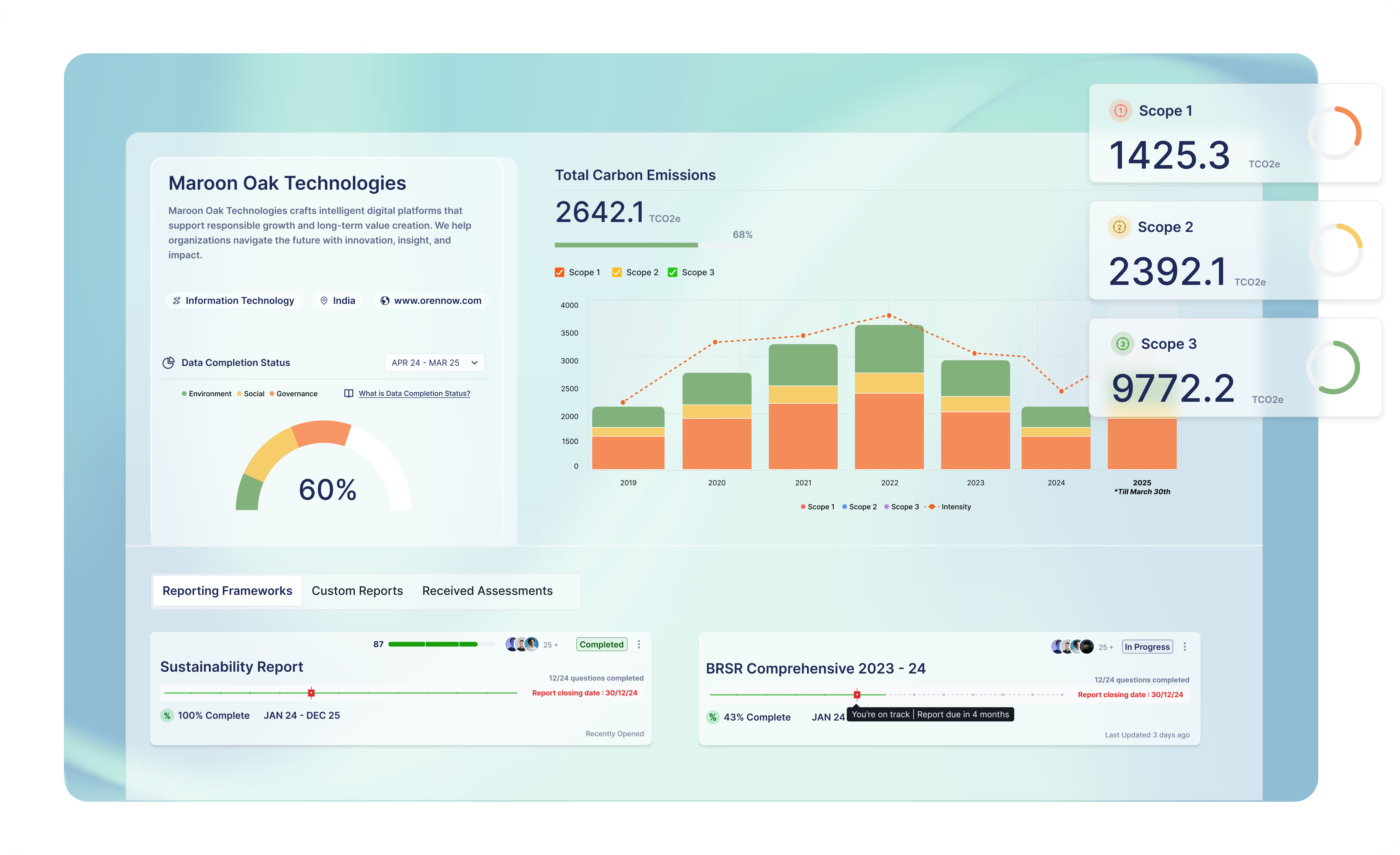A Practical Guide to Buying Carbon Credits: Key Considerations

Carbon credits have become an essential tool for businesses aiming to mitigate their environmental impact, comply with regulations and contribute to global sustainability goals. However, purchasing carbon credits is a complex process that requires careful consideration to ensure effectiveness, credibility, and alignment with your broader sustainability strategy. This guide outlines the critical aspects to keep in mind when buying carbon credits for your company, based on the latest best practices and industry standards.
Understanding the Basics of Carbon Credits
Before making any decisions, it is crucial to understand the key concepts related to carbon credits. A solid grasp of these fundamentals will help you make informed choices and avoid common pitfalls.
- Carbon Credits: These are essentially permits or certificates representing the removal or reduction of one tonne of carbon dioxide (CO2) or its equivalent (CO2e) from the atmosphere. These credits can be generated through various projects that either remove carbon from the atmosphere or prevent emissions.
- Carbon Offsets: When a carbon credit is used to compensate for an entity’s greenhouse gas emissions, it becomes a carbon offset. Offsets are often used to balance out unavoidable emissions.
- Carbon Markets: These are platforms where carbon credits and offsets are traded. There are two main types of carbon markets:
- Compliance Markets: These are mandatory markets set up by governments and regulatory bodies, where companies with emission caps buy credits to meet their obligations.
- Voluntary Markets: These markets allow companies and individuals to purchase credits to offset their emissions voluntarily or to support climate action.
Key Factors to Consider When Buying Carbon Credits
1. Verification and Certification
- Third-Party Standards: The integrity of carbon credits relies heavily on rigorous verification and certification processes. Prioritise credits that have been verified by reputable third-party standard setters such as Verra, Gold Standard, or the Climate Action Reserve. These standards ensure that the projects genuinely reduce or remove carbon emissions and meet strict criteria for additionality, permanence, and monitoring.
- Integrity Council for the Voluntary Carbon Market (ICVCM): Adhering to ICVCM guidance can further ensure that your purchases align with best practices and contribute to meaningful emission reductions.
- Transparency: Look for projects that provide detailed and accessible reports on their methodologies, outcomes, and verification processes. This transparency allows you to track the impact of your investment.
2. Project Type and Impact
- Alignment with Goals: Ensure the type of carbon project aligns with your environmental and social responsibility goals. Projects can range from reforestation and renewable energy to methane capture and energy efficiency.
- Tangible Benefits: Select projects that deliver tangible benefits beyond carbon reduction, such as enhancing biodiversity, supporting local communities, and improving community resilience. For example, reforestation projects sequester carbon, enhance biodiversity, and support local communities.
- Specific Project Examples:
- Reforestation: These projects sequester carbon and enhance biodiversity.
- Renewable Energy: Projects focused on wind, solar, or hydro-power.
- Methane Capture: Projects that capture and utilise methane.
- Energy Efficiency: Projects that improve energy use.
3. Geographic Location
- Regional Context: The location of a carbon project can significantly influence its effectiveness and the co-benefits it provides.
- Developing Countries: Projects in developing countries often offer additional social benefits, such as job creation and improved community resilience. However, they may also face varied regulatory and operational challenges.
- Local Regulations: Assess the regional context to ensure the project’s sustainability and compliance with local regulations and community needs.
4. Permanence and Risk of Reversal
- Long-Term Sustainability: Permanence refers to the long-term sustainability of carbon sequestration. Projects like afforestation may face risks such as deforestation or natural disasters that could reverse carbon gains.
- Risk Mitigation: Evaluate mechanisms like buffer pools or insurance to address these risks. Investing in projects with strong safeguards ensures that the carbon credits represent genuine and lasting emission reductions.
5. Carbon Removal or Emission Reduction
- Prioritisation: Decide whether to prioritise carbon removals or emission reduction credits.
- Carbon Removals: These projects, while often costlier, offer measurability and tracking advantages.
- Emission Reduction: Projects such as forest conservation may face scrutiny for overstating climate benefits. Seek independent expert guidance to build a robust carbon credit strategy based on evidence.
6. Purchasing Options
- Direct Purchasing: Buying directly from project developers offers transparency and direct investment options. This approach is more hands-on and can provide funding to projects early on, but there's an element of risk and you may have to wait years before receiving the credit.
- Brokers: Brokers provide market expertise but require ethical verification. They can shop around for the credits you need on your behalf and create a customised credit investment plan, but they will be more expensive than other options.
- Retailers: Retailers offer convenience but require scrutiny of credit credibility. This can be a quick way to get carbon credits and it's often preferred for those who need a small amount of credits quickly.
- Exchanges: Exchanges provide quick access and potential profits but less transparency, necessitating careful evaluation of project credibility and regulatory compliance. Some credits traded this way may not have all the information needed to ensure validation, carrying some risk.
7. Political Risk
- Policy Changes: Political factors can affect carbon projects, particularly concerning the implementation of Article 6.4 of the Paris Agreement.
- Government Actions: Governments might decide to use credits for their nationally determined contributions, which can impact project viability. Stay informed about political changes that might affect projects.
8. Insurance
- Risk Mitigation: Insurance can mitigate risks associated with carbon credit projects.
- Coverage: Carbon-specific insurers offer products covering non-delivery, political risk, and weather-related issues. Additional coverage ensures financial reinstatement or replacement of underperforming credits.
- Project Analysis: Insurers’ critical project analyses also provide an extra layer of confidence in project quality.
9. Transparency and Reporting
- Accountability: Transparency in how carbon credits are generated, verified, and retired is essential for maintaining trust and accountability.
- Detailed Reports: Look for projects that provide detailed and accessible reports on their methodologies, outcomes, and verification processes. This clear reporting allows you to track the impact of your investment and credibly communicate your sustainability efforts to stakeholders.
10. Making Informed Claims Post-Purchase
- Avoid Overstating Claims: Avoid overstating climate claims to prevent legal and reputational risks.
- VCMI Claims Code of Practice: The Voluntary Carbon Markets Integrity (VCMI) Claims Code of Practice outlines how to make credible claims, differentiating between levels of accomplishment. Adhere to this framework to safeguard against potential criticism and ensure transparent and accurate communication of your climate efforts.
11. Aligning with Your Company’s Goals
- Budget: Your budget will determine the type of crediting system in which you invest and the number of credits you can buy.
- Timeline: Consider how quickly you need your credits as some projects sell credits after the carbon has been removed while others require funding upfront and the credit is received after removal.
- Quantity: Calculate your carbon footprint in tonnes and purchase the appropriate number of carbon credits.
- Level of Involvement: Determine how involved you want to be in the projects you support as some programs are more hands-on than others.

Navigating the Carbon Markets
Understanding the different carbon markets is key to making informed purchasing decisions. Each market has its own rules, advantages, and challenges.
- Emissions Trading Systems (ETS): These are mandatory markets managed by governments where a set number of carbon allowances are determined annually. These allowances are distributed based on the entity's location and industry, and each year fewer allowances are given to lower carbon output overall.
- Voluntary Carbon Market (VCM): This market is where carbon credits are created and traded. Companies and individuals may invest in carbon credits to offset their carbon emissions or further contribute to climate action. Green business certifications are earned through the VCM.
- Compliance Market: The compliance carbon market is primarily for governments and companies in specific industries that are mandated to meet specific carbon goals.
- Voluntary Market: The voluntary carbon market serves businesses and individuals interested in offsetting their carbon footprint.
The Emissions Trading Systems (ETS) is designed to remove overall emissions slowly over time by providing a yearly cap of greenhouse gases that companies can emit which are lowered year after year, incentivising companies to make emission reductions. The VCM allows companies to go beyond the caps allocated by ETS, helping to improve progress toward greater carbon emissions goals.
Examples of Carbon Offset Programs and Standards
There are many carbon offset programs available, each with its own standards and methodologies. Knowing how they compare can help you choose the right one. Some of them are:
- Clean Development Mechanism (CDM): Established in 2006, the CDM is a compliance carbon market that allows countries with commitments under the Kyoto Protocol to purchase certified emission reduction credits (CER).
- It provides a platform to purchase CERs for countries with commitments under the Kyoto Protocol to limit or reduce greenhouse gas (GHG) emissions.
- Projects are typically located in developing countries.
- The CDM's project cycle includes seven steps: project design, national approval, validation, registration, monitoring, verification, and CER issuance.
- Canada's GHG Offset Credit System: Established in 2022, this system provides offset credits for sale and use in the federal Output-Based Pricing System.
- The system provides credits for facilities that need to meet compliance.
- Projects must reduce or avoid GHG emissions based on federal offset protocols for eligibility.
- Protocols include third-party verification.
- Regional Greenhouse Gas Initiative (RGGI): Created in 2005, RGGI is a collaboration of Eastern states in the US that aims to cap and reduce carbon dioxide emissions in the power sector.
- It allows companies to use offsets to meet up to 3.3% of their carbon compliance obligations.
- Offset projects must meet RGGI’s requirements, such as submitting consistent applications and verification and monitoring reports.
- Japan’s J-Credit Scheme: Established in 2013, Japan's J-Credit Scheme merges the Offset Credit (J-VER) and the Domestic Credit Scheme.
- Organisations can purchase offsets in compliance with several energy- and carbon-related mandates and individuals can also purchase voluntary carbon offsets.
- Projects must follow the J-Credit Scheme’s Implementation Rule for certification.
- Foreign organisations are eligible to open accounts.
- Verra and the Verified Carbon Standard (VCS): Created in 2005, Verra offers opportunities to reduce and offset carbon footprints through the VCS program.
- The VCS program has comprehensive requirements for projects wishing to become certified.
- Projects are subject to assessment from validation/verification bodies (VVBs).
- Natural Capital Exchange (NCX): Founded in 2010, NCX created a forest carbon marketplace using data collected for their Basemap forest dataset.
- Their technology provides improved data for forest management decisions and high-quality carbon offset credits.
- NCX uses a "short-term harvest deferral" methodology.
- Terrapass: Established in 2004, Terrapass offers carbon offset credits to individuals and businesses.
- They use the American Carbon Registry, CSA Group, Climate Action Reserve, Verified Carbon Standard, and the Gold Standard for their carbon offset project standards.
- Each offset purchase is reviewed by a third party.
- The Gold Standard: Founded in 2003, the Gold Standard holds climate and development projects to a high standard to ensure that they create value and maximise impact.
- The Gold Standard provides a guided online tour of their standards to help project developers understand the requirements they must follow.
- The certification process spans seven steps.

Landscape of Carbon Market in India
In July 2024, India adopted regulations for its compliance carbon market under the Carbon Credit Trading Scheme (CCTS). The scheme follows an intensity-based ‘baseline-and-credit’ system, setting annual GHG emissions intensity targets for obligated entities. Initially covering nine industrial sectors under the Perform, Achieve, and Trade (PAT) scheme—such as aluminium, cement, and petroleum refining—the scope will later expand to include coal-fired power generation. The CCTS will regulate CO₂ and perfluorocarbons (PFCs), addressing both direct (Scope 1) and indirect (Scope 2) emissions.
Obligated entities will receive annual emissions intensity targets, with overachievers earning Carbon Credit Certificates (CCCs) and underachievers required to purchase them. CCCs will be issued by the Bureau of Energy Efficiency (BEE) and traded via power exchanges, with participants registered in a national registry. India aims for the full compliance market to be operational by 2026, reinforcing its commitment to market-based climate solutions.
Verifying Your Carbon Credits
Verification is critical to ensuring the quality and credibility of your carbon credits. Without proper verification, there is no guarantee that your purchase is making a real impact. Here are some ways:
- Major Carbon Standards: Ensure the carbon credits are verified by a major carbon standard such as the Gold Standard, Verra, or the American Carbon Registry.
- Third-Party Verification: Carbon credits should be verified by a third party to ensure the amount of carbon removal is accurate.
- IC-VCM: The Integrity Council for the Voluntary Carbon Market (IC-VCM) launched its Core Carbon Principles in 2024, setting new global threshold standards for high-quality carbon credits.
The Role of Carbon Credits in Corporate Sustainability
Carbon credits can play an important role in a company’s sustainability strategy. However, they should complement, not replace, direct emissions reductions.
- Addressing Unavoidable Emissions: Carbon credits can help address emissions that your company cannot yet remove from its operations. They should serve as a placeholder as your company works towards decarbonisation goals.
- Supporting Climate Action: Companies that have already decarbonised their operations might continue to purchase carbon credits to support climate action, or purchase more carbon credits than they need to offset their emissions for the same reason.
- Green Business Certifications: Carbon credits can help improve your carbon accounting, which is a key part of gaining a green business certification.
- Profitability: The carbon credit market is lucrative, offering financial opportunities for those who can tap into it. Carbon offsets are also tax deductible. However, it’s important to remember the primary goal of carbon credits: to support climate action.
Common Questions About Carbon Offset Programs
- Carbon Offset Program vs Project: Carbon offset programs are the platforms or organisations that manage and offer carbon offset credits. Carbon offset projects are the initiatives that remove or avoid carbon emissions.
- Examples of Carbon Offset Projects: Projects include reforestation, biochar production, and the installation of wind turbine generators.
- Compliance vs Voluntary Carbon Market: The compliance carbon market is for mandated carbon goals, while the voluntary carbon market is for those interested in offsetting their carbon footprint.
- How to Pick High-Quality Carbon Offset Programs: Businesses should look for a program that offers projects that are thoroughly and transparently vetted. They should also consider how transparent the program is in allocating funds after the purchase.
- How to Purchase Carbon Offsets: Businesses can purchase offsets directly through a program’s website or may need to contact them directly.
- Cost of Carbon Offsets: Carbon offset credits can range from $6 to $1,200 per metric tonne CO2e and are commonly priced per ton of carbon removed.
- Greenwashing: Companies may unintentionally participate in greenwashing if they support a project that doesn't remove or avoid the amount of carbon it claims to, so vetting is crucial.
Conclusion
Purchasing carbon credits is a strategic step towards mitigating your company’s carbon footprint and contributing to global climate action. However, ensuring the credibility, transparency, and long-term impact of your investment is crucial. By prioritising high-quality, third-party-verified projects that align with your sustainability goals, you can maximise both environmental and social benefits. Additionally, staying informed about evolving regulations, market trends, and best practices will help you make informed decisions and avoid potential pitfalls.
Carbon credits should complement, rather than replace direct emission reductions, forming part of a broader, well-rounded sustainability strategy. With careful consideration and due diligence, businesses can leverage carbon credits effectively while maintaining integrity and accountability in their climate commitments.
Latest Blog Posts
Dive into our blog for insights on making your organization more sustainable.
Sustainability Simplified
Wherever you are in your sustainability journey, we help you advance with confidence.
Schedule a Call



.avif)

